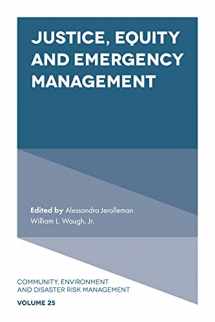
Justice, Equity and Emergency Management (Community, Environment and Disaster Risk Management, 25)
Book details
Summary
Description
The Community, Environment and Disaster Risk Managementseries deals with a wide range of issues relating to global environmental hazards, natural and man-made disasters, and approaches to disaster risk reduction. As people and communities are the first and the most important responders to disasters and environment-related problems, this series aims to analyse critical field-based mechanisms which link community, policy, and governance systems.
Justice, Equity and Emergency Managementtakes the principles proposed in Disaster Recovery Through the Lens of Justiceand applies a justice and equity lens across all phases of emergency management, focusing on key topics such as hazard mitigation, emerging technologies, long-term recovery, and others. The authors in this volume interrogate the applicability of the principles to technological innovation, indigenous peoples, persons with access and functional needs, agricultural disasters, and several other contexts. It is our hope that this effort will lead us closer to truly operationalizing and applying these principles in a way that leads to systemic change and better outcomes.


We would LOVE it if you could help us and other readers by reviewing the book
Book review



